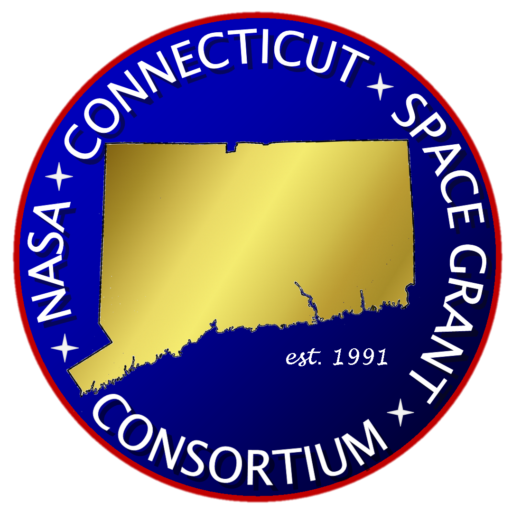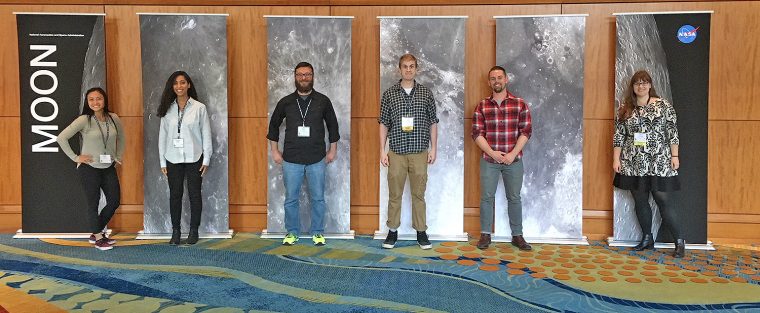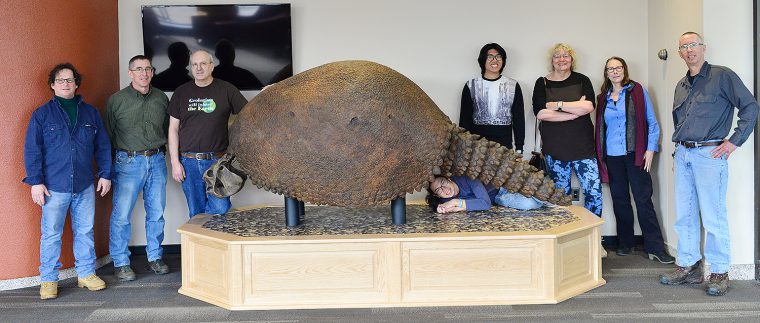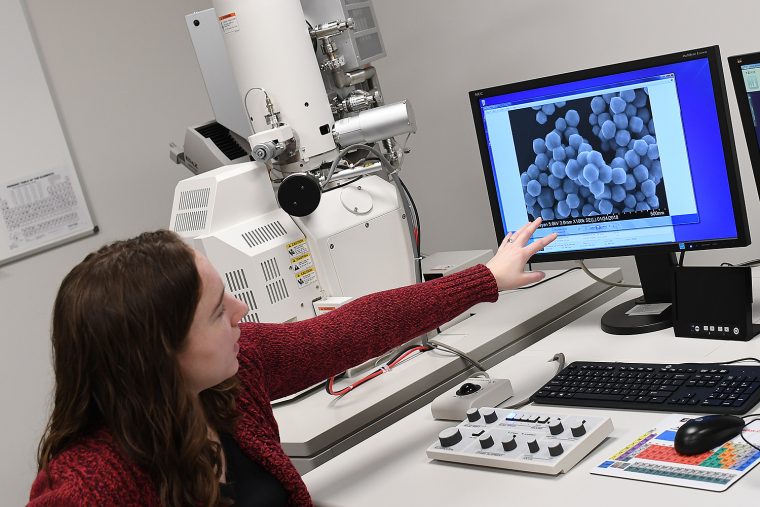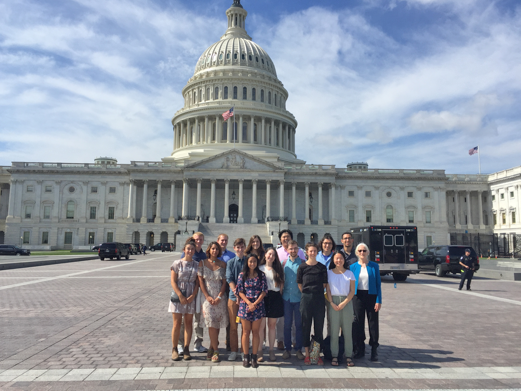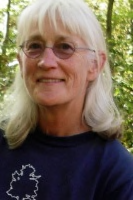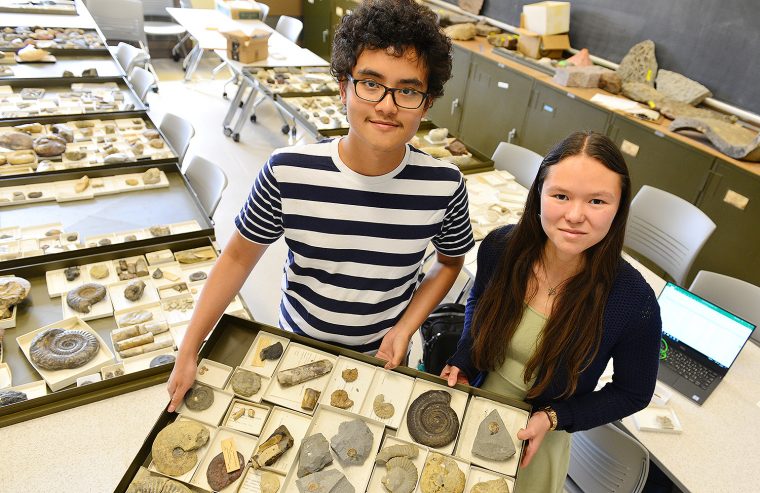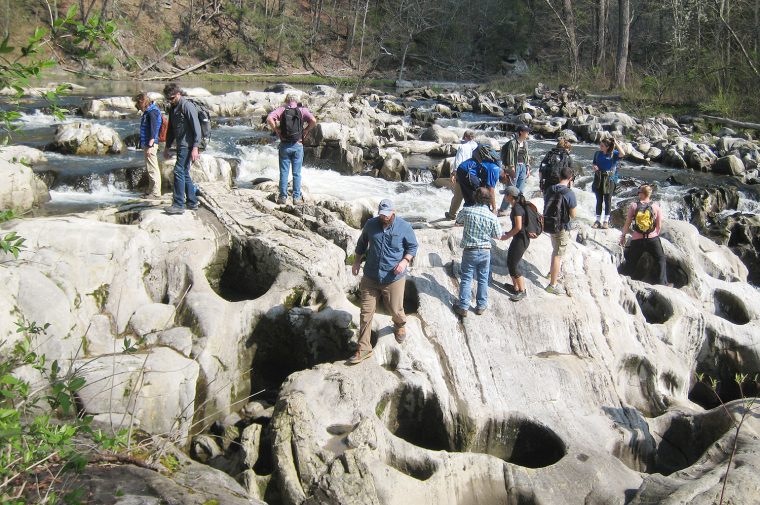Three undergraduates and one graduate student received NASA Connecticut Space Grant Awards from the NASA Connecticut Space Grant Consortium (CTSGC). The CTSGC is a federally mandated grant, internship, and scholarship program that aims to inspire the pursuit of careers in science, technology, engineering, and mathematics. Astronomy and math major Nicole Zalewski '20 received a $5,000 undergraduate research fellowship to pursue her study on “Measurement of the Radar Properties of the Oldest Rocks on Venus to Constrain Mineralogy." Her advisor is Martha Gilmore, the George I. Seney Professor of Geology, professor of earth and environmental sciences, co-coordinator of planetary science, and…
Throughout time, rising oceanic and atmospheric oxygen levels have been crucial to the habitability of environments at the surface of the Earth. "The Earth had no free oxygen gas in its atmosphere early on," said Ellen Thomas, the Harold T. Stearns Professor of Integrative Sciences. "The oxygen has been provided over time by photosynthesis of algae followed by storage of organic matter in rocks." Thomas, who also is research professor of earth and environmental sciences, examines the timing of oxygen formation in Earth's atmosphere and oceans over geological time in a study published in the May 2018 issue of Science.…
Faculty, graduate students, and alumni attended the 49th Lunar and Planetary Science Conference March 19–23 in The Woodlands, Texas. Three graduate students were awarded funds from the NASA Connecticut Space Grant that allowed them to travel to this meeting. Earth and environmental sciences graduate student Reid Perkins presented a research poster titled "Where Are the Missing Tessera Craters on Venus?" Perkins's advisor is Martha Gilmore, the George I. Seney Professor of Geology, professor of earth and environmental sciences. Earth and environmental sciences graduate student Melissa Luna presented a poster titled "Multivariate Spectral Analysis of CRISM Data to Characterize the Composition of Mawrth…
For the past 60 years, a massive megafauna mammal thrived in crates buried in Wesleyan's tunnels and attics. This month, the creature, known as a Glyptodon, has emerged in Exley Science Center for public viewing. Although the armored armadillo-like animal became extinct more than 10,000 years ago, Wesleyan acquired a fossil cast in the 1870s, where it became a showpiece at the university's Orange Judd Museum of Natural Sciences. In 1957, the museum closed and thousands of artifacts, including the Glyptodon, were haphazardly stuffed into crates and boxes and hauled to multiple locations throughout campus. "After the museum closed, everything was scattered all…
By using a newly acquired electron microscope, the E&ES 368 Meteorites and Cosmochemistry class was able to classify a meteorite discovered in Morocco. "We were able to determine that it was an H4 ordinary chondrite, and the chemical information being collected today will be used to document these findings and submit this meteorite to the Meteorite Nomenclature Committee of the Meteoritical Society for official classification," said class instructor Jim Greenwood, assistant professor of earth and environmental sciences. Wesleyan acquired the field-emission scanning electron microscope (FE-SEM) with support from a $202,300 National Science Foundation grant awarded in August 2017. Greenwood and Michelle Personick,…
Earth and Environmental Sciences faculty and senior seminar students have identified a potentially fast and inexpensive method for collecting and measuring Saharan dust in the Caribbean. E&ES faculty members Dana Royer, Tim Ku, Suzanne O’Connell, and Phil Resor, and students Kylen Moynihan ’17, Carolyn Ariori ’09, Gavin Bodkin ’09, Gabriela Doria MA’09, Katherine Enright ’15, Rémy Hatfield-Gardner ’17, Emma Kravet ’09, C. Miller Nuttle ’09, and Lisa Shepard ’17 have coauthored an article published in the January 2018 issue of Atmospheric Environment. The paper, titled “Tank Bromeliads capture Saharan dust in El Yunque National Forest, Puerto Rico,” summarizes student research…
Students enrolled in the Oceans and Climate service-learning course recently traveled to Washington, D.C., where they had the opportunity to learn how legislation related to climate change is moved through Congress. The trip, held Sept. 25-26, was led by Suzanne O'Connell, professor of earth and environmental sciences, faculty director of the McNair Program. After a day of travel and overnight stay, the group took an early Metro ride to the Library of Congress in Washington, D.C., where they met with representatives of the Congressional Research Service. Later that morning, the class traveled to the Dirksen Senate Building, which houses the U.S. Senate…
Ellen Thomas, University Professor in the College of Integrative Sciences and research professor of earth and environmental sciences, is a co-author of a paper titled "Very Large Release of Mostly Volcanic Carbon During the Paleocene-Eocene Thermal Maximum," published in the weekly science journal Nature on Aug. 31. The study focused on Palaeocene–Eocene Thermal Maximum, a surface warming event associated with ecological disruption that occurred about 56 million years ago, releasing a large amount of carbon. The researchers combined boron and carbon isotope data in an Earth system model and found that the source of carbon was much larger than previously thought. Most…
Suzanne O'Connell, professor of earth and environmental sciences, was named a Councilor of the Geological Society of America for the GSA's governing board. O'Connell will hold this position July 2017 through June 2021 along with two other faculty from the University of Rochester and California State University. "GSA members have again elected thoughtful and innovative individuals to lead the organization and further the impact of geoscience," said GSA Executive Director Vicki McConnell. "I am excited to work with the new Officers and Councilors as they join the GSA leadership team." In addition, Marty Gilmore, the George I. Seney Professor of Geology, professor of earth and environmental…
Scattered throughout campus are remnants of not only Wesleyan's history, but world history. After the closing of the Wesleyan Museum in 1957, thousands of specimens in many collections were displaced, often haphazardly, to nooks, crannies, tunnels, attics, storage rooms, and random cabinets at Exley Science Center, Judd Hall, and the Butterfield and Foss Hill residence complexes. Many of these specimens haven't been accessed in 60 years. "Sadly, few people are aware that Wesleyan has these unique resources," said Ellen Thomas, the University Professor in the College of Integrative Sciences and research professor of earth and environmental sciences. "The collections have not been…
From April 27-30 the Department of Earth and Environmental Sciences hosted the 30th Annual Keck Geology Consortium Symposium at Wesleyan. The event involved several field trips to local sites of geographic significance and concluded with presentations at Exley Science Center from those who attended the field trips. The first trip was led by Paul Olsen, the Arthur D. Storke Memorial Professor of Earth and Environmental Sciences at Columbia University. This excursion examined the Connecticut River Valley Basin for remaining traces of the mass extinction that preceded the rise of the dinosaurs 202 million years ago. "The Connecticut River Valley Basin is one…
Jim Greenwood, assistant professor of earth and environmental sciences, and Bill Herbst, the John Monroe Van Vleck Professor of Astronomy, professor of integrative sciences, have received a research award from NASA in the amount of $550,000 for a program titled “Experimental simulations of chondrule formation by radiative heating of hot planetesimals." The grant will allow Greenwood and Herbst to hire a post-doctoral fellow who will work in Greenwood’s lab in Exley Science Center to reproduce chondrules — small spherules of melted rock that formed early in the history of the solar system and hold clues to the origin of the planets.…


